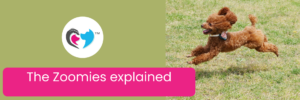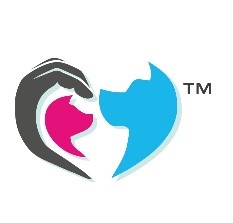Keeping our canine companions mentally stimulated and engaged is essential for their well-being. DIY dog enrichment toys offer a fantastic way to challenge your dog’s cognitive skills, relieve boredom, and provide a joyful outlet for their instincts. In this article, we will explore the world of DIY dog enrichment toys, discussing their benefits, sharing creative ideas, and emphasizing the importance of tailoring these toys to your dog’s preferences and abilities.
The Benefits of DIY Dog Enrichment Toys:
1. Mental Stimulation: Appropriate enrichment toys engage your dog’s brain, promoting problem-solving skills and preventing mental stagnation. Dogs, like humans, thrive on mental challenges, and these toys offer a productive outlet.
2. Stress Relief: Dogs can experience stress, especially when left alone or under-stimulated. Enrichment toys redirect their energy into constructive activities, promoting relaxation and reducing stress.
3. Physical Activity: Many DIY enrichment toys require your dog to interact, manipulate, and explore, providing a physical outlet for their energy.
4. Bonding Time: Engaging with your dog through enrichment toys strengthens your bond. It lets you observe your dog’s problem-solving strategies and preferences, helping you understand them better.
The risks of enrichment:
It is crucial to acknowledge that not all pets respond to enrichment in the same way. While enrichment can be highly beneficial, there are certain risks, particularly for pessimistic pets and when introducing overwhelming novelty.
- Pessimistic Pets and Enrichment:
Just as humans can have varying personalities, so can our pets. Some animals tend to be more cautious or pessimistic in their outlook. Introducing certain enrichment activities might result in fear or stress for such pets rather than curiosity and engagement. Enrichment that involves sudden or loud noises, quick movements, or unpredictable scenarios can be particularly challenging for these pets.
Tailor enrichment activities to your pet’s personality. Start with low-key activities that align with their comfort level. Gradually introduce new elements while observing their reactions closely. Be patient and provide plenty of positive reinforcement to build their confidence, and don’t write off items if your pet does not engage with it the first time. They may just need a little extra time to feel comfortable enough to interact with a new enrichment item. If your pet is hesitant, don’t introduce something else – rather leave the item out for him to get used to it before attempting to encourage him to interact with it.
- Novelty induced stress.
Enrichment is often associated with introducing novelty, which is beneficial for stimulating pets’ minds. However, excessive novelty introduced too quickly can lead to stress, especially for pets sensitive to change. When confronted with too many new elements, these pets might become overwhelmed, leading to heightened anxiety and even adverse behaviour. Gradual introduction is key. Introduce new enrichment elements one at a time, allowing your pet to acclimate. Monitor their reactions and give them ample time to explore and adjust before introducing more novelty. Pay attention to their stress signals, such as increased vocalization, hiding, or avoiding the enrichment altogether.
- Individual Preferences and Tolerance
Each pet has unique preferences and tolerance levels for enrichment. While some pets might thrive with puzzle toys and interactive games, others might find them frustrating or intimidating. Pets that prefer quieter, calmer environments might feel stressed by activities that involve elevated levels of physical activity or noise. Observe and respect your pet’s preferences. Provide a variety of enrichment options and pay attention to their reactions. If a specific type of enrichment consistently leads to stress or avoidance, consider alternatives that align better with their personality.
- Quality Over Quantity
Enrichment is not a one-size-fits-all solution. More enrichment does not necessarily mean better well-being. Introducing too many enrichment activities at once can lead to sensory overload, causing stress rather than relaxation. Focus on quality rather than quantity. Choose enrichments that resonate with your pet’s interests and gradually build a routine around them. Rotate activities to keep things fresh but avoid overwhelming your pet.
DIY Dog Enrichment Toy Ideas:
1. Snuffle Mats: Create a snuffle mat by tying fleece strips onto a rubber mat or grid. Hide kibble or small treats within the fabric, stimulating your dog’s sense of smell and encouraging them to “sniff” out the rewards.
2. DIY Puzzle Toys: Repurpose cardboard boxes, PVC pipes, or muffin tins to create puzzle toys. Hide treats in various compartments and encourage your dog to figure out how to access the treats.
3. Frozen Treat Dispensers: Freeze a mixture of plain yoghurt, mashed bananas, and small dog treats in a Kong toy or ice cube tray. The frozen treat provides a cooling sensation while keeping your dog entertained as they work to extract the goodies.
4. Scent Trails: Create a scent trail using treats or food around your home or yard. Your dog’s natural scavenging instincts will kick in as they follow the trail, keeping them engaged and active.
5. Interactive Feeders: Use muffin tins and tennis balls to create an interactive feeder. Place treats in the muffin tin’s compartments and cover each with a tennis ball. Your dog will have to move the balls to reveal the hidden treats.
Remember, Safety First:
While DIY enrichment toys offer numerous benefits, safety should always be a priority. Supervise your dog’s playtime, especially when introducing a new toy. Ensure the materials used are dog-safe and free from small parts that could pose a choking hazard. Consider your dog’s preferences and sensitivities when designing or selecting enrichment toys.
DIY dog enrichment toys are an excellent way to provide mental stimulation, promote cognitive skills, and offer hours of fun for your furry friend. By tapping into your creativity and considering your dog’s unique needs, you can craft engaging toys that will keep them happily entertained. Remember, a happy and mentally stimulated dog is a content and well-adjusted companion, making the effort you put into creating enrichment toys well worth it.





